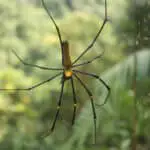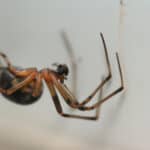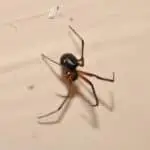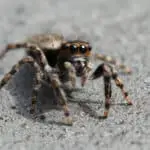Have you ever encountered spider crickets in your home? These creepy-looking insects, also known as camel crickets, are not only unsightly but can also cause damage to various items in your house. It’s important to know how to get rid of them and prevent them from coming back.
Spider crickets enjoy living in damp areas that replicate their natural environment in caves and forests. They seek out humid environments, such as basements, and can reproduce quickly, leading to a full-blown infestation if not dealt with promptly. In this article, I will share effective strategies to kill spider crickets and prevent them from invading your home again.
Key Takeaways
- Spider crickets are unsightly insects that can cause damage to various items in your home.
- They thrive in damp, humid environments and can reproduce quickly, leading to a full-blown infestation.
- Effective strategies to kill spider crickets include reducing moisture in your home, using insecticides, and setting up traps. Preventing infestations involves sealing entry points and reducing clutter in your home.
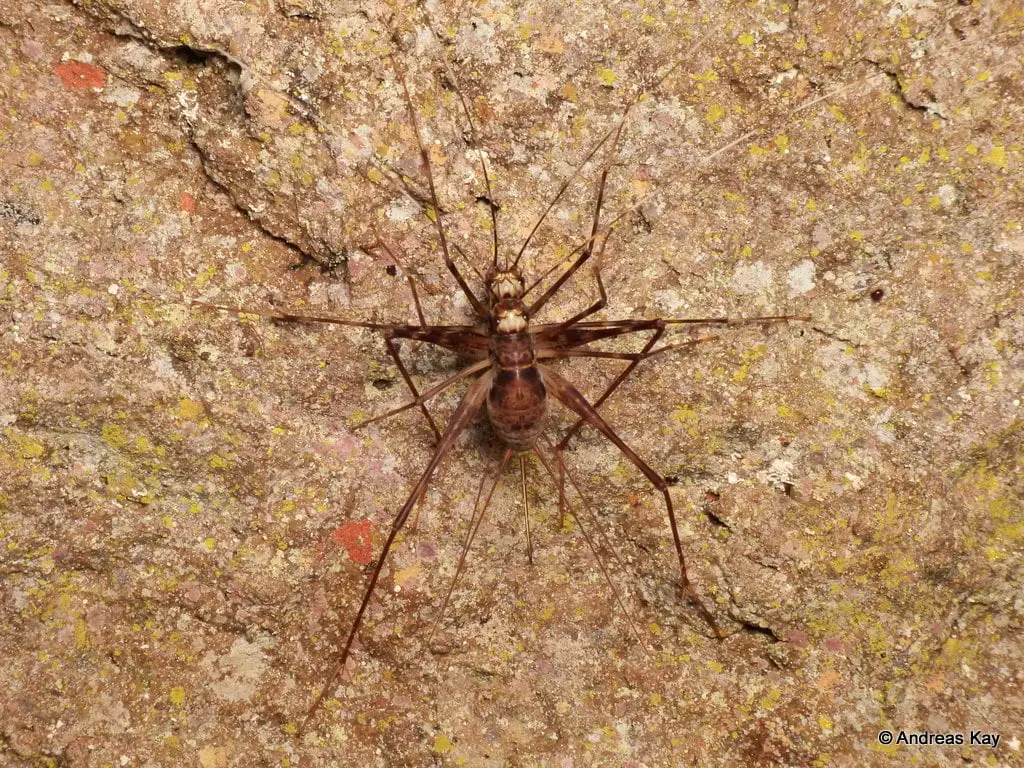
Understanding Spider Crickets
Spider crickets, also known as cave crickets or camel crickets, are insects that belong to the order Orthoptera. Despite their name, they are not true crickets and are not harmful to humans. In fact, they are often considered beneficial because they feed on other insects and help control their populations.
Anatomy of Spider Crickets
Spider crickets have a unique appearance that sets them apart from other crickets. They have long, spindly legs that allow them to leap great distances, and their bodies are covered in small hairs. They have large, curved antennae that help them navigate in the dark, and they can grow up to 2 inches in length.
Habitat and Behavior
Spider crickets are often found in dark, damp areas like basements, crawl spaces, and caves. They are attracted to moisture and clutter, and they can often be found hiding in piles of laundry or boxes. They are most common in the eastern United States, but they can be found throughout the country.
Spider crickets are nocturnal and are most active at night. They are not harmful to humans, but they can be creepy to some people because of their appearance and leaping ability.
Spider Crickets vs Other Crickets
Spider crickets are often confused with other types of crickets, but there are some key differences. House crickets and field crickets are both true crickets and have a similar appearance to spider crickets, but they do not have the same long legs or curved antennae. Cave crickets, on the other hand, are very similar to spider crickets and are often found in the same habitats. Camel crickets are another name for spider crickets and are often found in Asia.
Invasive species like the Diestrammena asynamora have also been found in the United States and can be mistaken for spider crickets. However, they have longer antennae and a different body shape.
Overall, understanding the anatomy, habitat, and behavior of spider crickets can help homeowners identify and control infestations. By reducing moisture and clutter in dark, damp areas, homeowners can discourage spider crickets from taking up residence in their homes.
Damage Caused by Spider Crickets
Spider crickets, also known as camel crickets, are not only creepy-looking but also cause damage to your home and property. In this section, I will discuss the various ways in which spider crickets can cause damage.
Damage to Home
Spider crickets are known to chew on a variety of materials found in your home, including wood, fabrics, cardboard boxes, and even plants. They can cause significant damage to wooden structures and furniture, including doors, window frames, and baseboards. They also chew on fabrics, including clothing, curtains, and carpets, causing unsightly holes and damage.
In addition to chewing on materials, spider crickets can also create a nuisance by their presence. They are known to emit a foul smell and can attract other pests, such as rodents and spiders.
Potential Health Risks
Spider crickets can also pose potential health risks to humans. They are known to carry and spread fungus and mold, which can cause respiratory problems. They also feed on moldy bread, which can lead to the spread of harmful bacteria.
It is important to take action to prevent and control spider cricket infestations to avoid the potential damage and health risks they can cause. In the next section, I will discuss effective strategies for getting rid of spider crickets.
Preventing Spider Cricket Infestation
As the old saying goes, prevention is better than cure. In the case of spider crickets, preventing an infestation is much easier than trying to get rid of one. Here are some tips that can help you prevent spider cricket infestations in your home.
Maintaining a Dry Environment
Spider crickets are attracted to damp and humid environments, so keeping your home dry is key to preventing an infestation. Use a dehumidifier to reduce the humidity levels in your home, especially in basements and crawl spaces. You can also use a fan to improve air circulation and prevent moisture buildup.
Sealing Entry Points
Spider crickets can enter your home through small cracks and crevices in walls, floors, and foundations. Seal these entry points using caulk, weather-stripping, or other sealants to prevent spider crickets from coming in. Pay extra attention to areas around windows, doors, and exterior openings.
Keeping Your Space Clean
Spider crickets are attracted to clutter and food sources, so keeping your home clean is important. Vacuum regularly to remove any spider crickets, their eggs, and any food sources they may be attracted to. Avoid storing cardboard boxes and other items that can provide hiding places for spider crickets. Keep your space clean and free of debris, especially in areas like basements and crawl spaces.
By following these simple tips, you can prevent spider cricket infestations in your home and ensure a pest-free environment. Remember to keep your space dry, seal entry points, and keep your space clean to keep spider crickets at bay.
Getting Rid of Spider Crickets
As someone who has dealt with spider cricket infestations in the past, I know how frustrating and unsettling it can be to have these pests in your home. Luckily, there are several effective methods for controlling and getting rid of spider crickets. In this guide, I’ll cover some of the most popular and effective ways to eliminate these pesky insects.
Using Traps
One of the most effective ways to get rid of spider crickets is by using traps. Sticky traps, also known as glue traps, are a popular choice and can be purchased at most hardware stores or online. These traps use an adhesive to catch and trap the spider crickets as they walk across them. Place the traps in areas where you’ve seen the most spider cricket activity, such as near damp or humid areas like basements or crawl spaces.
Using Insecticides
Insecticides can also be effective in controlling spider cricket populations. Deltamethrin dust and Delta Dust are commonly used insecticides that are effective against spider crickets. Insecticide sprays can also be used, but be sure to read the label and follow the instructions carefully. Soapy water can also be an effective insecticide when sprayed directly on the spider crickets.
Natural Remedies
If you prefer to avoid using chemicals or insecticides, there are several natural ways to get rid of spider crickets. Diatomaceous earth is a natural substance that can be sprinkled around the areas where spider crickets are present. It works by dehydrating the spider crickets and causing them to die. Neem oil is another natural remedy that can be sprayed directly on the spider crickets to repel them.
Hiring a Pest Control Expert
If you’ve tried several methods and are still struggling with a spider cricket infestation, it may be time to call in a pest control expert. Exterminators have access to more powerful insecticides and can provide a more comprehensive treatment plan to eliminate the spider crickets. They can also provide guidance on how to prevent future infestations.
In conclusion, there are several effective ways to get rid of spider crickets. Whether you choose to use traps, insecticides, natural remedies, or hire a pest control expert, it’s important to take action as soon as possible to prevent the spider cricket population from growing. With a little persistence and the right tools, you can successfully eliminate these pests from your home.
Conclusion
In conclusion, spider crickets, also known as cave crickets or camel crickets, can be a nuisance when they invade your home. These omnivorous pests are attracted to warmth and moisture and can quickly become an infestation if left unchecked.
Fortunately, there are several effective strategies for getting rid of spider crickets. Some of the most popular methods include using insecticides, diatomaceous earth, and electric rat traps. Additionally, sealing up cracks and moisture sources in your home can help prevent spider cricket invasions in the first place.
It’s important to act quickly if you suspect a spider cricket infestation in your home. These pests can reproduce quickly and cause damage to your property. By taking preventative measures and using effective pest control methods, you can keep your home spider cricket-free and avoid the headaches of dealing with an infestation.
Frequently Asked Questions
What are spider crickets and where do they come from?
Spider crickets, also known as camel crickets, are insects that are commonly found in damp environments such as basements, crawl spaces, and garages. They are not actually spiders or crickets, but belong to the order Orthoptera, which includes grasshoppers and crickets. Spider crickets are typically brown or tan in color and have long legs and antennae.
How can I get rid of spider crickets naturally?
There are several natural ways to get rid of spider crickets. One effective method is to reduce moisture in your home with a dehumidifier. Spider crickets seek out damp, humid environments, so keeping your home dry can help deter them. Sealing cracks and gaps in your home can also help keep spider crickets out. Other natural methods include using boric acid bait and mowing your lawn regularly to reduce hiding places.
What are the best spider cricket killers?
There are several effective spider cricket killers available, including commercial insecticides and electric rat traps. Neem oil and homemade glue traps can also be effective. It is important to follow the instructions carefully when using any insecticide or trap to ensure safety and effectiveness.
Are spider crickets dangerous?
Spider crickets are not considered dangerous to humans. They do not bite or sting, and are not known to carry any diseases. However, they can be a nuisance and can cause damage to fabrics and other materials in your home.
Can an exterminator get rid of spider crickets?
Yes, an exterminator can help get rid of spider crickets. They can use professional-grade insecticides and traps to eliminate spider crickets from your home. It is important to choose a reputable exterminator and to follow their instructions carefully to ensure safety and effectiveness.
What can I use to kill spider crickets besides sprays?
In addition to sprays, there are several other methods for killing spider crickets. Electric rat traps can be effective, as can homemade glue traps and boric acid bait. Mowing your lawn regularly and keeping your home dry can also help deter spider crickets.



